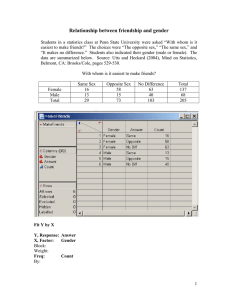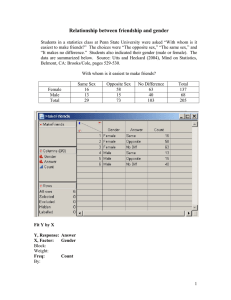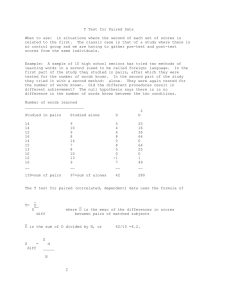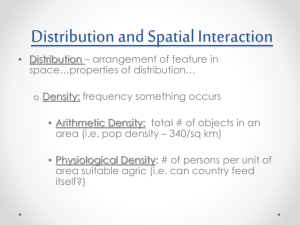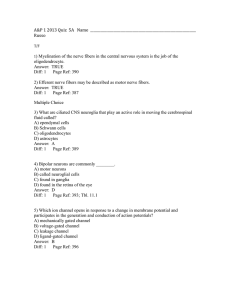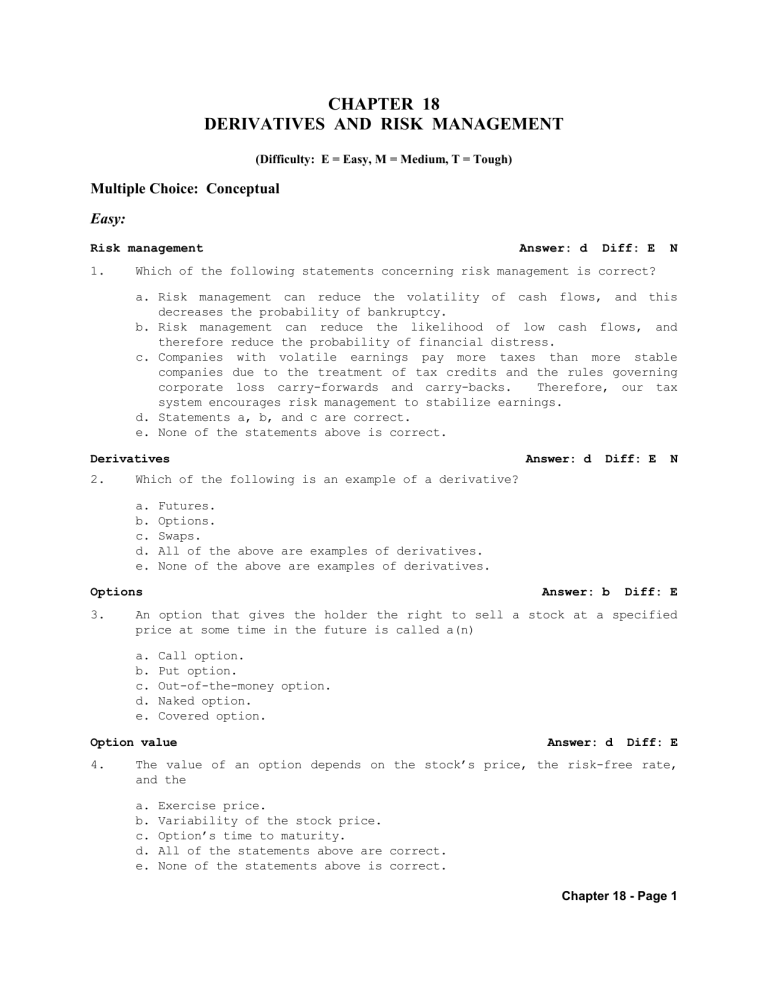
CHAPTER 18 DERIVATIVES AND RISK MANAGEMENT (Difficulty: E = Easy, M = Medium, T = Tough) Multiple Choice: Conceptual Easy: Risk management 1. Answer: d Diff: E N Which of the following statements concerning risk management is correct? a. Risk management can reduce the volatility of cash flows, and this decreases the probability of bankruptcy. b. Risk management can reduce the likelihood of low cash flows, and therefore reduce the probability of financial distress. c. Companies with volatile earnings pay more taxes than more stable companies due to the treatment of tax credits and the rules governing corporate loss carry-forwards and carry-backs. Therefore, our tax system encourages risk management to stabilize earnings. d. Statements a, b, and c are correct. e. None of the statements above is correct. Derivatives 2. N Futures. Options. Swaps. All of the above are examples of derivatives. None of the above are examples of derivatives. Options Answer: b Diff: E An option that gives the holder the right to sell a stock at a specified price at some time in the future is called a(n) a. b. c. d. e. Call option. Put option. Out-of-the-money option. Naked option. Covered option. Option value 4. Diff: E Which of the following is an example of a derivative? a. b. c. d. e. 3. Answer: d Answer: d Diff: E The value of an option depends on the stock’s price, the risk-free rate, and the a. b. c. d. e. Exercise price. Variability of the stock price. Option’s time to maturity. All of the statements above are correct. None of the statements above is correct. Chapter 18 - Page 1 Option concepts 5. Answer: a Diff: E There are call options on the common stock of XYZ Corporation. Which of the following best describes the factors affecting the value of these call options? a. The price of the call options is likely to rise if XYZ’s stock price rises. b. The higher the strike price on the call option, the higher the call option price. c. Assuming the same strike price, a call option that expires in one month will sell for a higher price than a call option that expires in three months. d. All of the statements above are correct. e. None of the statements above is correct. Option concepts 6. Answer: b Which of the following events is likely to decrease the value of call options on the common stock of GCC Company? a. b. c. d. e. An increase An increase An increase An increase GCC’s stock in GCC’s stock price. in the exercise price of the option. in the amount of time until the option expires. in the risk-free rate. price becomes more risky (higher variance). Hedges 7. Diff: E Answer: b Diff: E N A riskless hedge can best be defined as a. A situation in which aggregate risk can be reduced by derivatives transactions between two parties. b. A hedge in which an investor buys a stock and simultaneously sells a call option on that stock and ends up with a riskless position. c. Standardized contracts that are traded on exchanges and are “marked to market” daily, but where physical delivery of the underlying asset is virtually never taken. d. Two parties agree to exchange obligations to make specified payment streams. e. None of the statements above defines a riskless hedge. Miscellaneous option concepts 8. Answer: e Diff: E Which of the following statements is correct? a. Put options give investors the right to buy a stock at a certain exercise price before a specified date. b. Call options give investors the right to sell a stock at a certain exercise price before a specified date. c. Options typically sell for less than their exercise value. d. LEAPS are very short-term options that have begun trading on the exchanges in recent years. e. Option holders are not entitled to receive dividends unless they choose to exercise their option. Chapter 18 - Page 2 Miscellaneous risk concepts 9. Answer: d Diff: E N Which of the following statements are most correct? a. Risk management involves identifying events that could have adverse financial consequences and then taking actions to prevent and/or to minimize the damage caused by these events. b. Years ago, corporate risk managers dealt primarily with insurance. More recently, the scope of risk management has been broadened to include such things as controlling the costs of key inputs or protecting against changes in interest rates or exchange rates. c. A CEO might define risk as the possibility that his firm’s future earnings and free cash flows will be significantly lower than expected. d. Statements a, b, and c are correct. e. None of the statements above is correct. Medium: Options 10. Answer: d An investor who writes call options against stock held in his or her portfolio is said to be selling . a. b. c. d. e. In-the-money options. Put options. Naked options. Covered options. Out-of-the-money options. Option concepts 11. Diff: M Answer: c Diff: M N Which of the following statements regarding factors that affect call option prices is correct? a. The longer the call option has to run the smaller its value and the smaller its premium. b. An option on an extremely volatile stock is worth less than one on a very stable stock. c. The price of a call option increases as the risk-free rate increases. d. Statements a, b, and c are correct. e. None of the statements above is correct. Option concepts 12. Answer: a Diff: M Which of the following statements is most correct? a. If the underlying asset does not pay a dividend, it does not make sense to exercise a call option prior to its expiration date. b. Call options generally sell at a price less than their exercise value. c. If a stock becomes riskier (more volatile), call options on the stock are likely to decline in value. d. Statements b and c are correct. e. None of the statements above is correct. Chapter 18 - Page 3 Option value 13. Answer: e Diff: M Deeble Construction Co.’s stock is trading at $30 a share. There are also call options on the company’s stock, some with an exercise price of $25 and some with an exercise price of $35. All options expire in three months. Which of the following best describes the value of these options? a. The options with the $25 exercise price will sell for $5. b. The options with the $25 exercise price will sell for less than the options with the $35 exercise price. c. The options with the $25 exercise price have an exercise value greater than $5. d. The options with the $35 exercise price have an exercise value greater than $0. e. If Deeble’s stock price rose by $5, the exercise value of the options with the $25 exercise price would also increase by $5. Option value 14. Answer: d Diff: M Warnes Motors’ stock is trading at $20 a share. Call options that expire in three months with an exercise price of $20 have a price of $1.50. Which of the following will occur if the stock price increases 10 percent to $22 a share? a. The price of the call option will increase by $2. b. The price of the call option will increase by more than $2. c. The price of the call option will increase by less than $2, and the percentage increase in price will be less than 10 percent. d. The price of the call option will increase by less than $2, but the percentage increase in price will be more than 10 percent. e. The price of the call option will increase by more than $2, but the percentage increase in price will be less than 10 percent. Swaps 15. Answer: d A swap is a method for reducing financial risk. statements about swaps, if any, is incorrect? Diff: M Which of the following a. A swap involves the exchange of cash payment obligations. b. The earliest swaps were currency swaps, in which companies traded debt denominated in different currencies, say dollars and pounds. c. Swaps are generally arranged by a financial intermediary, who may or may not take the position of one of the counterparties. d. A problem with swaps is the lack of standardized contracts, which limits the development of a secondary market. e. All of the statements above are correct. Chapter 18 - Page 4 Forwards vs. futures 16. Answer: b Diff: M Which of the following statements is most correct? a. One advantage of forward contracts is that they are default free. b. Futures contracts generally trade on an organized exchange and are marked to market daily. c. Goods are never delivered under forward contracts, but are almost always delivered under futures contracts. d. Statements a and c are correct. e. None of the statements above is correct. Hedging 17. Answer: d Diff: M A commercial bank estimates that its net income suffers whenever interest rates increase. The bank is looking to use derivatives to reduce its interest rate risk. Which of the following strategies best protects the bank against rising interest rates? a. Buying inverse floaters. b. Entering into an interest rate swap where the bank receives a fixed payment stream, and in return agrees to make payments that float with market interest rates. c. Purchase principal only (PO) strips that decline in value whenever interest rates rise. d. Enter into a short hedge in which the bank agrees to sell interest rate futures. e. Sell some of the banks floating rate loans and use the proceeds to make fixed rate loans. Tough: Options 18. Answer: d Diff: T Which of the following statements is most correct? a. An option’s value is determined by its exercise value, which is the market price of the stock less its striking price. Thus, an option can’t sell for more than its exercise value. b. As stock price rises, the premium portion of an option on a stock increases because the difference between the price of the stock and the fixed striking price increases. c. Issuing options provides companies with a low cost method of raising capital. d. The market value of an option depends in part on the option’s time to maturity and on the variability of the underlying stock’s price. e. The potential loss on an option decreases as the option sells at higher and higher prices because the profit margin gets bigger. Chapter 18 - Page 5 Multiple Choice: Problems Easy: Put options 19. Answer: c Diff: E Suppose you believe that Du Pont’s stock price is going to decline from its current level of $82.50 sometime during the next 5 months. For $510.25 you could buy a 5-month put option giving you the right to sell 100 shares at a price of $83.00 per share. If you bought a 100-share contract for $510.25 and Du Pont’s stock price actually dropped to $63.00, what would be your net profit (after transactions costs but before taxes)? a. b. c. d. e. $1,950.00 $1,439.75 $1,489.75 $2,000.00 $2,435.00 Tough: Black-Scholes model 20. Answer: c Diff: T An analyst is interested in using the Black-Scholes model to value call options on the stock of Ledbetter Inc. The analyst has accumulated the following information: The price of the stock is $40. The strike price is $40. The option matures in 3 months (t = 0.25). The standard deviation of the stock’s returns is 0.40 and the variance is 0.16. The risk-free rate is 12 percent. Given this information, the analyst is then able to calculate some other necessary components of the Black-Scholes model: d1 = 0.25. d2 = 0.05. N(d1) = 0.5987. N(d2) = 0.5199. N(d1) and N(d2) represent areas under a standard normal distribution function. Using the Black-Scholes model, what is the value of the call option? a. b. c. d. e. $1.88 $2.48 $3.76 $4.20 $5.12 Chapter 18 - Page 6 CHAPTER 18 ANSWERS AND SOLUTIONS 1. Risk management Answer: d Diff: E N Statements a, b, and c are all correct; therefore, the correct answer is statement d. 2. Derivatives Answer: d Diff: E N Futures, options, and swaps are all examples of derivatives; therefore, the correct answer is statement d. 3. Options Answer: b Diff: E 4. Option value Answer: d Diff: E 5. Option concepts Answer: a Diff: E 6. Option concepts Answer: b Diff: E 7. Hedges Answer: b Diff: E N Statement a is the definition of a natural hedge. Statement c is the definition of a futures contract, while statement d is the definition of a swap. Statement c best defines a riskless hedge. 8. Miscellaneous option concepts 9. Miscellaneous risk concepts Answer: e Answer: d Diff: E Diff: E N Statements a, b, and c are all correct; therefore, the correct answer is statement d. 10. Options 11. Option concepts Answer: d Answer: c Diff: M Diff: M N Statement a is incorrect. The longer a call option has to run, the greater its value and the larger its premium. Statement b is incorrect. An option on an extremely volatile stock is worth more than one on a very stable stock. Statement c is correct. The effect of the risk-free rate on a call option isn’t as obvious. The expected growth rate of a firm’s stock price increases as interest rates increase, but the present value of future cash flows decreases. The first effect tends to increase the call option’s price, while the second one tends to decrease it. As it turns out, the first effect dominates the second one, so the price of a call option always increases as the risk-free rate increases. 12. Option concepts Answer: a Diff: M 13. Option value Answer: e Diff: M Chapter 18 - Page 7 14. Option value Answer: d Diff: M 15. Swaps Answer: d Diff: M 16. Forwards vs. futures Answer: b Diff: M 17. Hedging Answer: d Diff: M Given its interest rate exposure, the bank needs a strategy which is profitable whenever interest rates rise. If designed correctly, the profits from this strategy can partially, or in some cases, completely offset the losses the bank realizes from its basic operations whenever rates rise. Of the five strategies, only the short hedge is profitable when rates rise--all the other strategies would make sense if the bank was looking for extra profits when rates dropped. 18. Options Answer: d Diff: T 19. Put options Answer: c Diff: E You would make $83 - $63 = $20 per share, for a total gross profit of 100($20) = $2,000. Your net profit would be reduced by transactions costs, thus you would net $2,000 - $510.25 = $1,489.75. 20. Black-Scholes model The V = = = Answer: c Diff: T Black-Scholes model calculates the value of the call option as: P[N(d1)] - Xe-kRF t [N(d2)] $40[0.5987] - $40e-(0.12)(0.25)[0.5199] $3.76. Chapter 18 - Page 8
